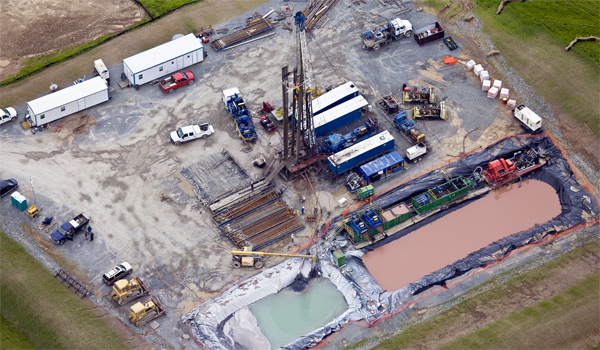What is fracking? Fracking, otherwise known as hydraulic fracturing, has been in use since the 1940’s but has recently seen a rise in the United States in part due to the economic benefit it brings to the communities where these resources are located and also because of the desire for energy security. The process of fracking begins with a well drilled vertically or horizontally 1-2+ miles into the Earth. In order to reduce the risk of leakage into the groundwater, the well is encased in steel and/or cement. At the time the vertical well reaches the layer of rock where the oil or natural gas is located, the well curves to about 90 degrees to drill horizontally along the rock layer, extending potentially over a mile. Next, fracking fluid is pumped into the well at pressures high enough to fracture the surrounding rock, creating fissures that allow oil or gas to flow through. This fracking fluid, also called slickwater, while mostly water, contains a range of additives and chemicals as well. Proppants are also pumped into the well and are used to keep the fractures open so the oil or natural gas can flow freely through the fissures. The reservoirs of oil or natural gas are then pumped back to the surface along with flowback liquid containing numerous contaminates. The flowback liquid is eventually injected deep in the ground below groundwater or disposed of at wastewater treatment facilities. The image below provides a graphic representation of how fracking works.
Pros:
>Fracking provides economic benefits such as jobs in the communities where the wells are located. (Reference 2)
>Fracking allows the US to produce their own energy resources, decreasing dependency on imported oil and fossil fuels and the costs associated with that. (Reference 2)
>Fracking can stimulate new production from older wells. (Reference 1)
Cons/Environmental Impact:
>An average of 400 tanker trucks are required to carry water and supplies to and from the site, contributing to air pollution and use of fossil fuels. (Reference 3)
>Millions of gallons of water are used in each fracturing job.
>About 40,000 gallons of chemicals (up to 600 types of chemicals such as lead, uranium, and mercury) are used in a fracturing job.
>Groundwater used by nearby towns for drinking water can be contaminated from leaching of the chemicals during the fracking process sometimes causing health complications.
>Up to 50% of the fracking fluid (not biodegradable) is not recovered and is left in the ground.
>Fracking fluid left to evaporate releases harmful VOC’s into the atmosphere contributing to acid rain, contaminated air, and ground level ozone.
References:
1. What is fracking?
http://www.what-is-fracking.com/what-is-hydraulic-fracturing/
2. Live Science
http://www.livescience.com/34464-what-is-fracking.html
3. Dangers of Fracking
http://www.dangersoffracking.com/

